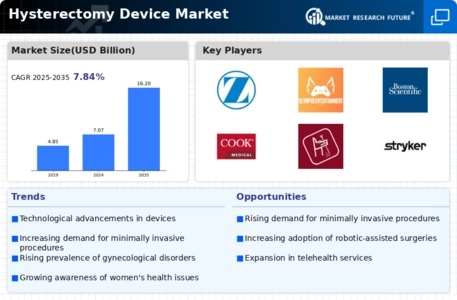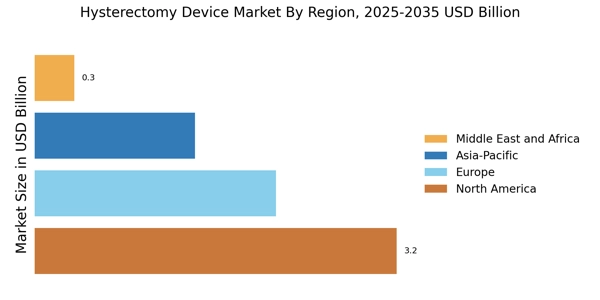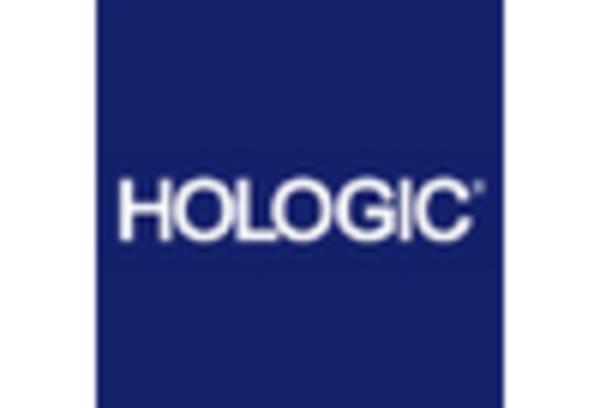Rising Healthcare Expenditure
An upward trend in healthcare expenditure is significantly influencing the Hysterectomy Device Market. As countries allocate more resources to healthcare, there is a corresponding increase in the availability and accessibility of advanced surgical devices. This financial commitment enables hospitals and clinics to invest in state-of-the-art hysterectomy devices, which can enhance surgical outcomes and patient satisfaction. Reports suggest that healthcare spending is projected to grow at a compound annual growth rate of 5-7% over the next few years, further supporting the expansion of the Hysterectomy Device Market. This financial landscape is likely to foster innovation and competition among device manufacturers.
Aging Population and Demographic Shifts
The demographic shift towards an aging population is a pivotal factor driving the Hysterectomy Device Market. As women age, they become more susceptible to conditions that may necessitate a hysterectomy, such as uterine cancer and other reproductive health issues. Projections indicate that the population of women aged 50 and above will continue to rise, leading to an increased demand for surgical interventions. This demographic trend is likely to create a sustained market for hysterectomy devices, as healthcare systems adapt to the needs of an older population. The Hysterectomy Device Market is thus positioned to benefit from these demographic changes, as more women seek surgical solutions for their health concerns.
Increasing Prevalence of Uterine Disorders
The rising incidence of uterine disorders, including fibroids and endometriosis, is a critical driver for the Hysterectomy Device Market. As these conditions become more common, the demand for effective treatment options, including hysterectomy, is likely to escalate. Data indicates that approximately 20-50% of women may develop uterine fibroids by the age of 50, necessitating surgical intervention in many cases. This growing patient population is expected to propel the market forward, as healthcare systems adapt to meet the increasing need for hysterectomy procedures. Consequently, the Hysterectomy Device Market is poised for expansion as more women seek solutions for their reproductive health issues.
Growing Awareness and Education on Women's Health
The Hysterectomy Device Market is benefiting from a heightened awareness and education surrounding women's health issues. Campaigns aimed at informing women about reproductive health and available treatment options are gaining traction. This increased awareness is likely to lead to more women seeking medical advice and considering hysterectomy as a viable treatment option for various conditions. Educational initiatives by healthcare providers and non-profit organizations are instrumental in dispelling myths and encouraging proactive health management. As women become more informed about their health choices, the demand for hysterectomy procedures and, consequently, the Hysterectomy Device Market is expected to grow.
Technological Advancements in Hysterectomy Devices
The Hysterectomy Device Market is experiencing a surge in technological advancements, particularly in the development of minimally invasive surgical techniques. Innovations such as laparoscopic and robotic-assisted surgeries are becoming increasingly prevalent, allowing for reduced recovery times and lower complication rates. According to recent data, the adoption of these advanced devices has led to a significant increase in the number of procedures performed annually. This trend is likely to continue as healthcare providers seek to enhance patient outcomes and operational efficiency. Furthermore, the integration of artificial intelligence and machine learning in surgical devices is expected to refine precision and improve surgical planning, thereby driving growth in the Hysterectomy Device Market.


















Leave a Comment